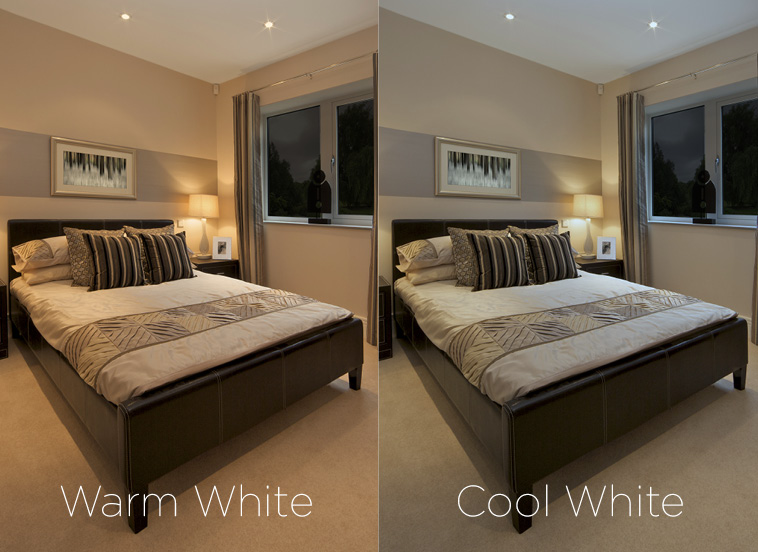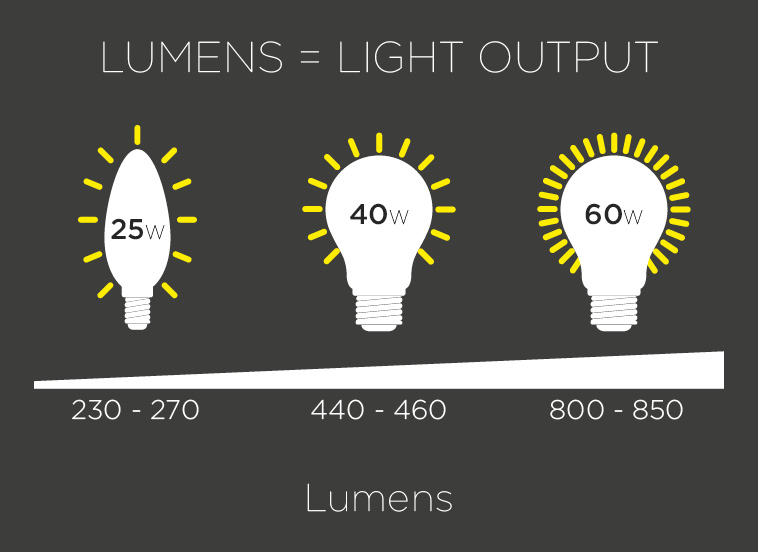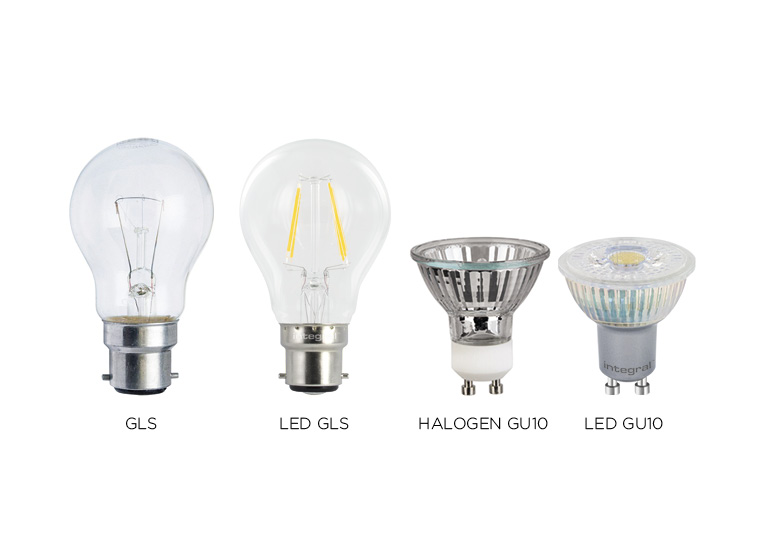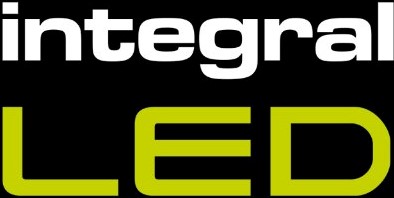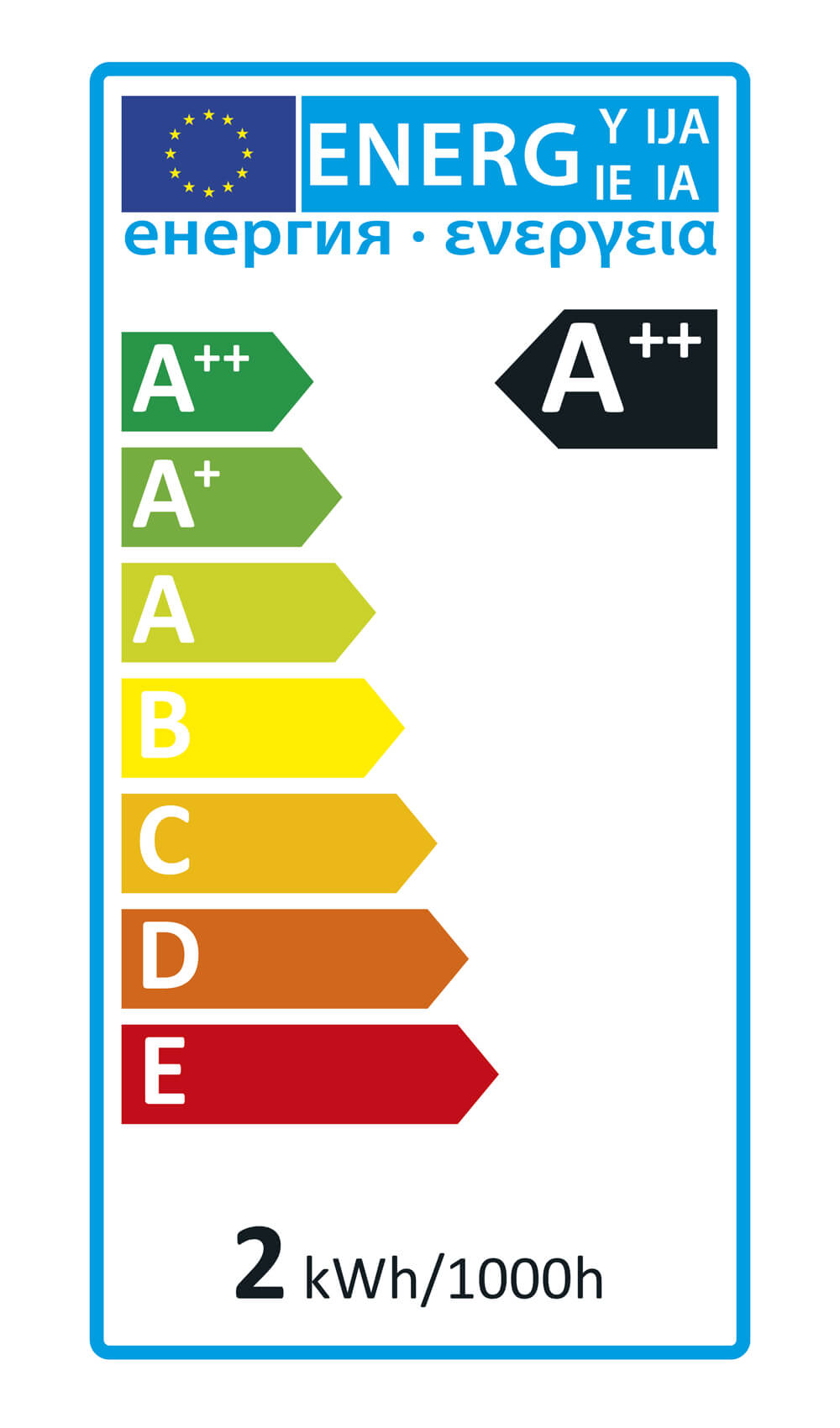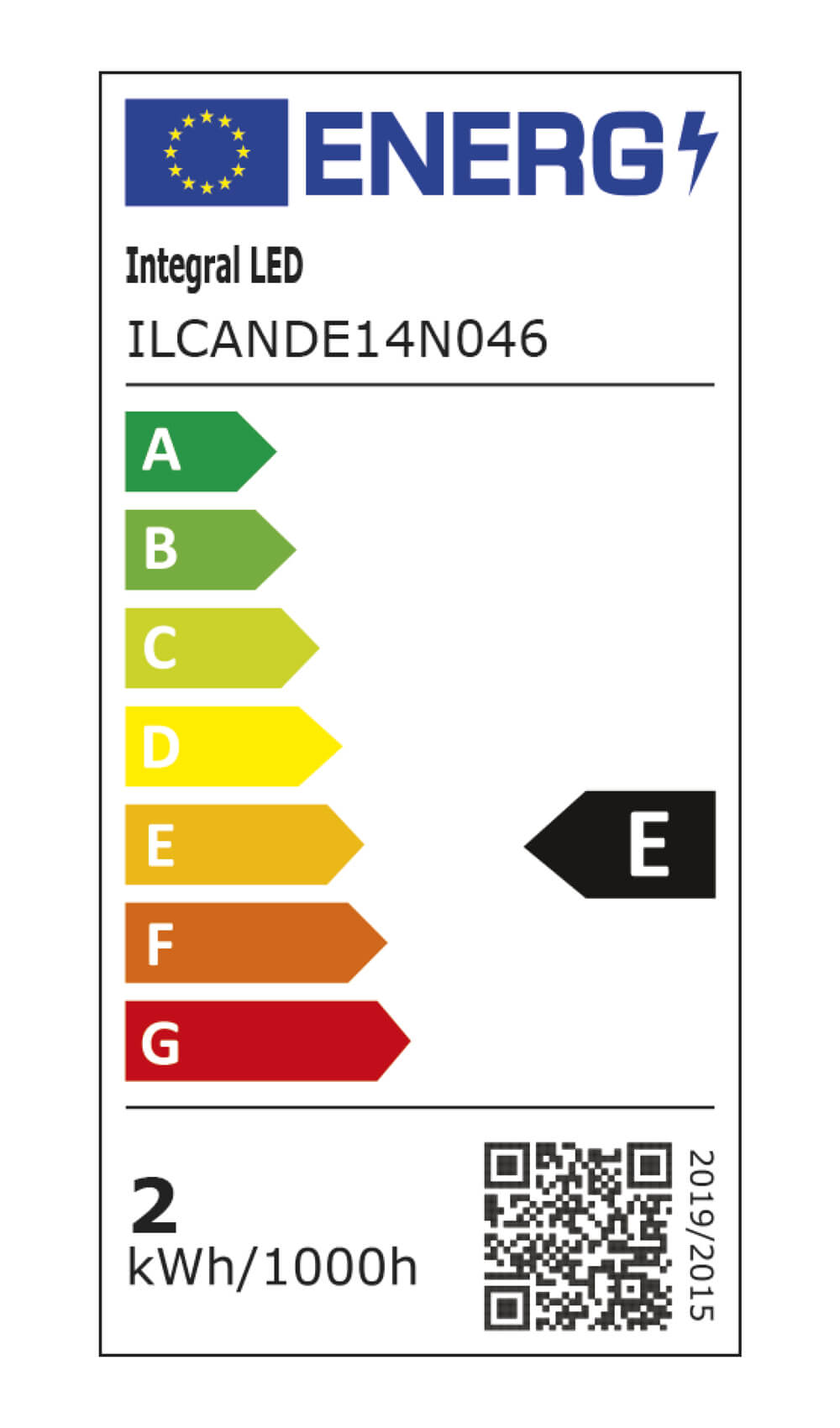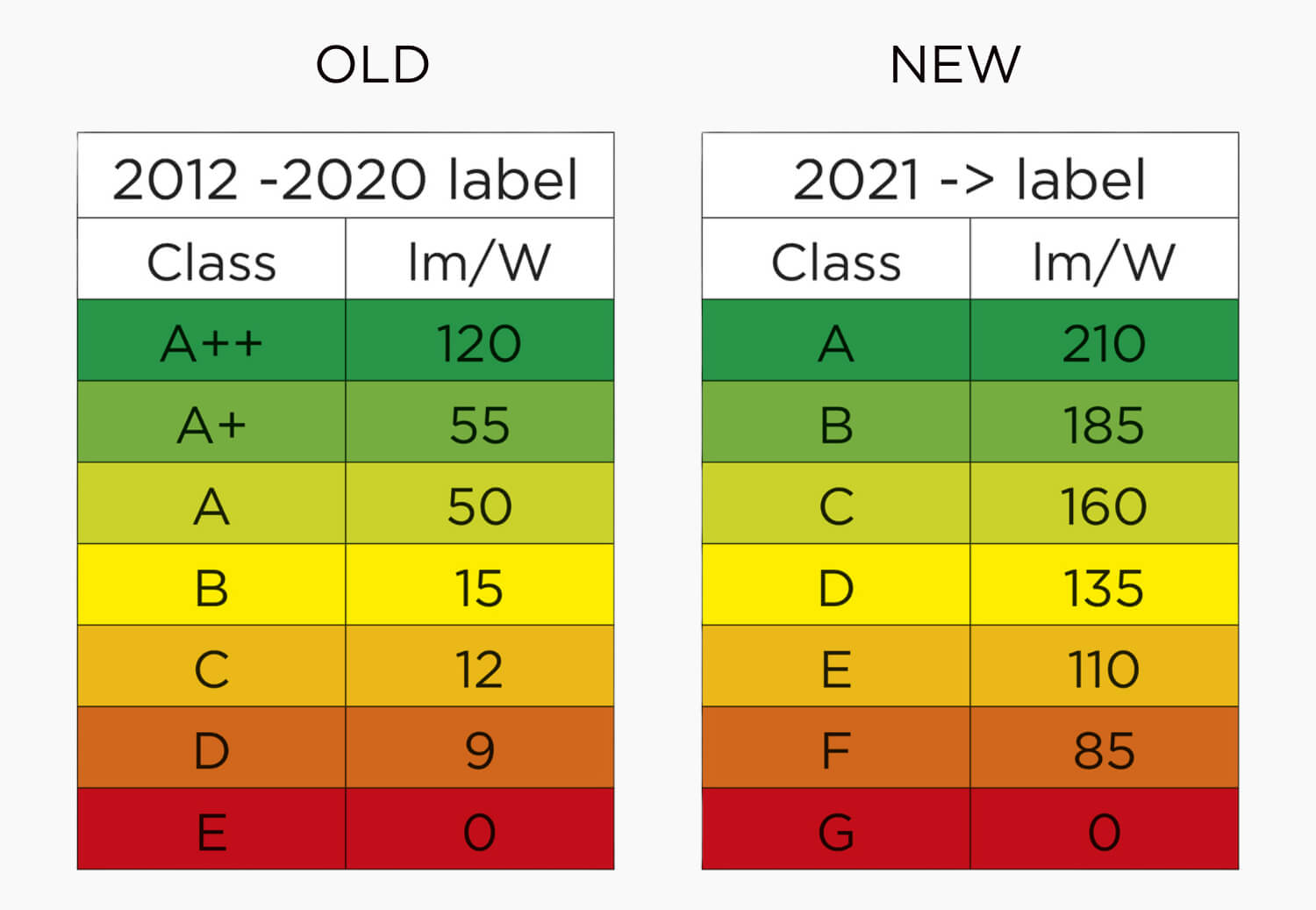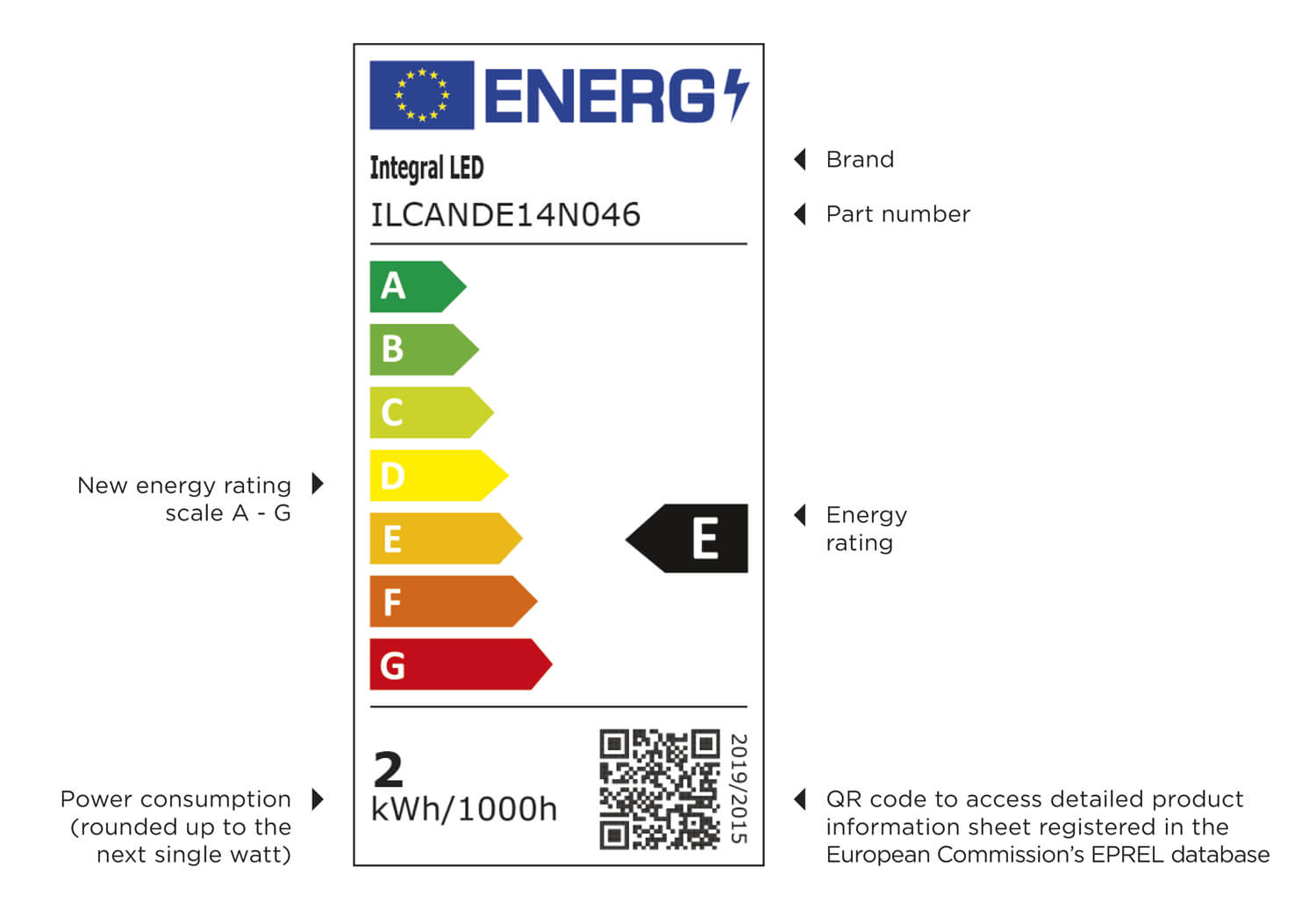New Lighting Regulations 2021: What You Need to Know
LEDs have brought about a revolution for electric lighting: efficiency improvements in the past decade have been more significant than those in the entirety of the preceding 120 years. Yet with lighting still accounting for nearly 5% of global CO2 emissions, there is much more work to be done.
In line with this, two new lighting regulations which aim to continue the work of improving energy efficiency in the market and cut carbon emissions came into force on the 1st of September 2021 in the EU, with one combined regulation for the UK implemented on 1st October 2021.
These are new European Commission regulations which were ratified and published in December 2019. Since the UK has left the European Union, it decided to replicate the technical requirements and combine them into one UK regulation known as a Statutory instrument. In practical terms, this means the new lighting regulations will apply to EU member states and the UK in a near identical fashion – only specific regulatory markings are likely to vary, for example CE/UKCA and EU/GB flags on point of sale energy labels.
Under the current Brexit trade agreement, Northern Ireland remains part of the single European market and is subject to the EU version of these regulations.
What are the new lighting regulations called?
EU SLR - Single Lighting Regulation | Commission Regulation (EU) No 2019/2020 laying down ecodesign requirements for light sources and separate control gear.
EU ELR - Energy Labelling Regulation | Commission Regulation (EU) No 2019/2015 laying down energy labelling requirements of light sources.
UK The Ecodesign for Energy-Related Products and Energy Information (Lighting Products) Regulations 2021
What is the Single Lighting Regulation about?
The SLR will replace and repeal three regulations: (EC) No 244/2009, (EC) No 245/2009 and (EU) No 1194/2012. This will give a single point of reference for compliance, and defines in new terms the light sources covered under the regulation and separate control gear. Light sources can be anything that emits white lights, including LED lamps, LED modules, and luminaires. Luminaires can also be classified as containing products for light sources.
The new, more stringent minimum efficacy thresholds on light sources and separate control gear should encourage the lighting industry to innovate and further improve energy efficiency beyond existing technology.
It also encourages design for a circular economy with more reuse and less refuse. This means products should be designed to be more reliable, be upgradeable where possible or enable the ‘right to repair’, contain more recyclable material, and be easier to dismantle. This will ultimately help to reduce waste ending up in landfill
What is the Energy Labelling Regulation about?
Energy Labels are the tool used to communicate energy efficiency in a simple manner. They are used on all electrical energy using products, including washing machines, televisions and light sources.
Regulations are a tool used to implement the requirements for improving efficiency.
The ELR will replace and repeal two regulations: (EC) No 874/2012 and (EC) No 2017/1369.
It defines the new energy labelling requirements for packaging, sales literature, websites and distance selling. As part of this, all products requiring energy labels must be registered into the EPREL database. A QR code linking to the technical product information is also mandatory.
How have energy labels changed?
The old ratings had lost clarity as the efficiency essential to the previous regulation had maxed out. Most product would be rated A, A+ or A++ while the E and F ratings had become redundant. As such, energy ratings have been rescaled to increase clarity between different classifications. This also gives headroom to accommodate more energy efficient products entering the market.
Previous EU energy label
Previously, the label had a rainbow colour scale going from Green to Red and lettering scale from A++ to E.
New EU and UK energy labels
The revised scale is still green to red in colour, but has a lettering scale from A to G with more efficiency needed to achieve these levels. As such, many products that were rated A++ will now be rated C or D.
New energy efficiency requirements
It’s worth bearing in mind that products that have a lower rating on their new label have not become less efficient – they are consuming the same amount of power as they always have. A clear example of this is the Integral LED High Performance+ panel which has an industry leading efficiency of 175lm/w, but is still only classified C on the new scale.
What each part of the energy label means
Consumers are now presented with more information on each energy label, which may take some getting used to, but overall these changes should help them in making fair comparisons between products.
How the energy label QR codes work
By scanning the QR code on the packaging with their phone’s camera app, consumers will be able to instantly access the product information sheet for that product. This helps them to quickly check how well it compares to other products using the same metrics – no guesswork involved.
Market surveillance will also use these codes. It will help with the process of weeding out poor performing products, raise accountability and ensure customers are paying for what they expect.
Pictograms for replaceability of light sources and separate control gear
Pictograms on packaging of containing products will aid consumers in understanding the replaceability of light sources and separate control gear. A set of Pictograms created by Lighting Europe indicating whether a light source or separate control gear is replaceable, and if it is, whether it can be replaced by a professional or an end user.
What action does the lighting industry need to take?
Everyone has a responsibility towards compliance: manufacturers, importers, distributors, wholesalers and retailers are ALL affected by these changes.
Depending on where you sit in the supply chain, you’ll have different responsibilities. Read through our checklists to make sure you’re ready.
The key date to remember is September 1st 2021 – that’s when the SLR comes into force in Europe and any products placed onto the market from this day must comply with it.
It is important to understand what placed on the market means. Products are placed on the market when they become available to sell. Some systems make products available for sale even before they are built. In this way, any product which was placed on the market before 1st September in Europe only has to comply with the previous regulation, even though it could be delivered to customers six months later or more.
Products placed onto the market prior to the SLR enforcement date – those that comply with the old regulations – can stay there indefinitely. The exception to this is old lighting technologies such as halogen/tubes/incandescent, which are so inefficient that they are being banned by the SLR and will have to be pulled from the shelves according to dates set out in the SLR.
New labelling is required for ALL products. Those that were placed on the market before September 1st have until March 2023 to be relabelled, while those placed on the market from September 1st need the new A-G rating at launch.
Manufacturers and Importers:
- Products placed on the market prior to September 1st 2021 are not subject to SLR compliance - they are subject to Ecodesign regulation applicable at time of being placed on the market, however ELR is applicable and relabelling must be completed during the transitional grace period
- New products placed on the Market on the open market as of September 1st 2021 and onward must be compliant to the new SLR
- All light sources in scope of the regulation and not exempt (excluding separate control gear) must be registered into the EPREL database
- The new energy labels must be available at the point of sale, applied onto the retail packaging (if applicable) of individual light source products (excluding bulk/transport packaging)
- Technical sales literature must contain the new energy ratings in the arrow format as laid out in the ELR
- New energy labels must be made available to wholesalers and retailers so that they can revise POS and technical sales literature
- Containing products must have technical documentation regarding replaceability of the light source and/or control gear
- Containing product packaging does not require an energy label but must display the applicable replaceability pictograms
- If a light source is supplied fitted inside a containing product then the containing product must clearly display the light source energy label
- If a light source with its own retail packaging is placed inside a containing product’s packaging, the containing product packaging does not need to display the new energy label because it’s already be printed on the light source retail packaging.
Wholesalers and Retailers:
- Light source energy labelling changes must be applied by March 2023. Existing stock can continue to be supplied as-is up to March 2023.
- Existing stock can have the new energy labels stuck over the old ones, but the new labels must completely cover any visibility of the old energy rating. Beware: there are energy label dimensional requirements to consider as laid out in the ELR. Integral LED will actively support its customers by providing guidance upon request
- You must provide the information detailed in Annex VII in visual advertisements, technical promotional material and for non-internet distance selling
- You must provide the information detailed in Annex VII when engaging in distance sales via the internet
If you still need further details, you can read the SLR in full here.
Consumers, too, will have a role to play by recognising the new ratings and understanding that an old A++ rated product and a new D rated product are equally efficient. It is recommended that retailers are proactive in helping with this process.
What does this mean for the market?
The changes to the lighting industry will be profound, as the following summary shows.
Any light source within SLR scope that doesn’t reach its minimum efficacy requirements will be prohibited from entering the market, while those already on the market will be sold off and not replaced like for like. Other legacy products such a fluorescent tube technology will have a phase out date after which no sales at all will be allowed. Generally, the affected light sources are those not using LED technology.
Light sources (including those within Containing Products) will be registered in a centralised European Commission database called the European Product Register for Energy Labelling, more commonly referred to as the EPREL Database. EPREL product data will be accessible to both consumers and market surveillance via the QR code on the EPREL energy label (wherever applicable i.e. retail packing or point of sale).
Energy labels will be clearer and consumers will be able to easily compare products on a like for like basis. The industry will also operate in a fairer, more competitive market thanks to data being presented in a consistent and transparent format.
The increased competition will encourage better performing products through more investment in R&D, invention and innovation. This is particularly important for LED technology where momentum in continual efficacy improvements has slowed down.
Better market surveillance will enforce compliance by way of comparing the EPREL data to that of physically tested specimens. The higher barriers to market entry should also reduce rogue trading.
EPREL: What lighting businesses need to know
Working with new energy labelling is now unavoidable for the lighting industry, so it’s worth familiarising yourself with its standard requirements for its use.
- New energy labels cannot be publicised prior to 1st of September 2021
- ALL applicable products, either on the market or intended to be placed onto the market, must be registered in the EPREL database if intended for the EU marketplace
- ALL applicable products, either on the market or intended to be placed onto the market, must have the new energy rating label, suitable for the EU market and/or UK market
- Energy Related Products (ERP) must be compliant to their respective efficiency regulations – for lighting – if it’s in scope – that’s the SLR.
- As of 1st September, 2021, ONLY SLR compliant products can be placed on the market, or if already placed on the market they may continue to be saleable.
- Data within the EPREL database must be fully complete in order for the item to be published as live – and therefore considered saleable.
- Products on the market with incomplete EPREL registrations will be deemed non-compliant by market surveillance.
You can use the EPREL to register products here.
What are the benefits of EPREL for consumers?
EPREL data will create free, publically available product information sheets which give a detailed summary of the performance of a light source.
The QR codes displayed on all the new energy labels link to the product information sheets, allowing for fast and easy access.
The data required by the EPREL is tightly defined, which helps to create a fairer level playing field across the market.
The product information sheets are laid out in a consistent format, helping consumers to compare competing products and make an informed choice.
NEWSLETTER
Sign-up to our newsletter and stay up to date with the latest product information and special offers.
Suggested Articles:
